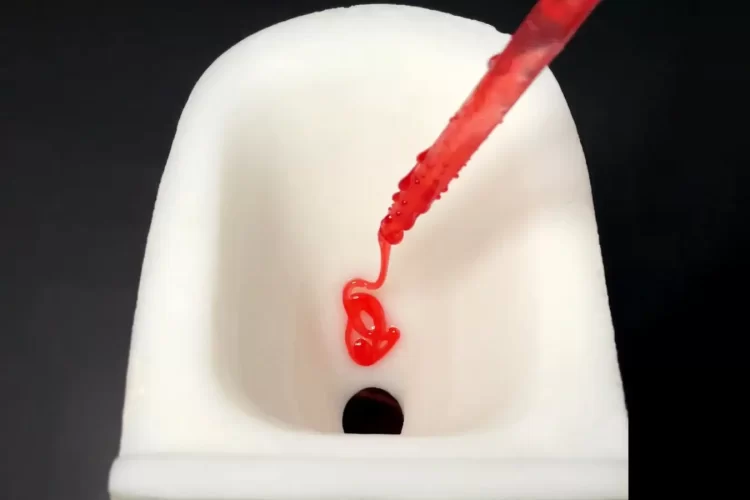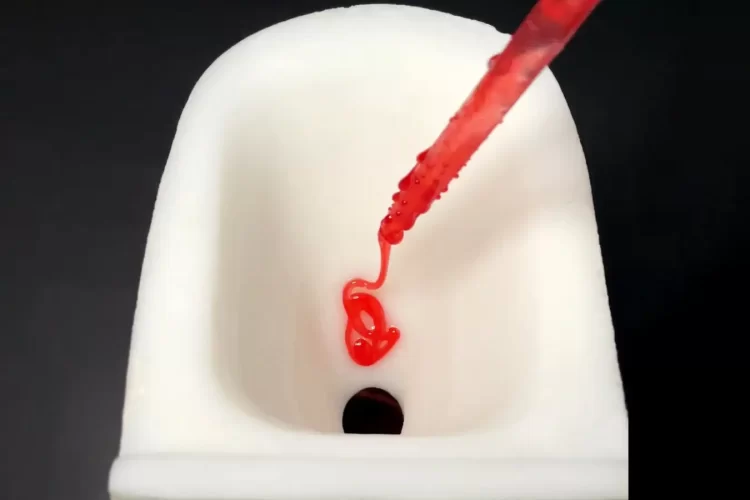Chinese scientists at the Huazhong University of Science and Technology in Wuhan have developed a new, ultra-slippery toilet bowl that almost nothing sticks to.
Porcelain has been the most common toilet bowl manufacturing material for quite a while now, and while it may be a while before a new material upsets it, we already have our eye on an intriguing new material. One of the most important qualities of a good toilet bowl is slipperiness, and while porcelain is ok, it’s definitely not the best. Excrements and other types of waste usually disposed of in the toilet tend to stick to it and require scrubbing and cleaning, which results in wasted water. But what if the waste just slipped down into the bowl with no or very little water? Scientists in China have unveiled an innovative toilet bowl made of an ultra-slippery material that almost nothing sticks to.

Photo: Yike Li/Huazhong University of Science and Technology
Yike Li and his colleagues at the Huazhong University of Science and Technology in Wuhan have created a lightweight toilet bowl made of a mixture of plastic and hydrophobic sand grains which is then lubricated with silicone oil for extra slipperiness. Now, there are actually other slippery toilet bowls out there, the most notable of which are the ones coated with a layer of Teflon. However, that material is very sensitive to abrasions, so it tends to degrade the more it is used. This new material, however, is much more resilient.
Because of the material structure, the silicone oil used to boost slipperiness permeates into the deeper layers of the toilet bowl, which means it remains slippery even after thousands of uses, scrubbing, and washing. Scientists tested it with a variety of common wastes, from artificial feces, which mimic the texture of the real thing, as well as muddy water, milk, yogurt, honey, and starch-filled gel. Nothing stuck to the bowl, not even after it was scrubbed with sandpaper 1,000 times.
The 3D-printed Abrasion-Resistant Super-Slippery Flush Toilet (ARSSFT) used by Li and his team to test the material was 10 times smaller than a real toilet bowl, but there is no indication that scale affected the scientists’ experiments in any way. They acknowledge that manufacturing regular toilet bowls for regular households would be prohibitively expensive at this point, but suggest that replacing standard toilet bowls in particularly busy environments like public toilets or on trains could save a lot of water.













